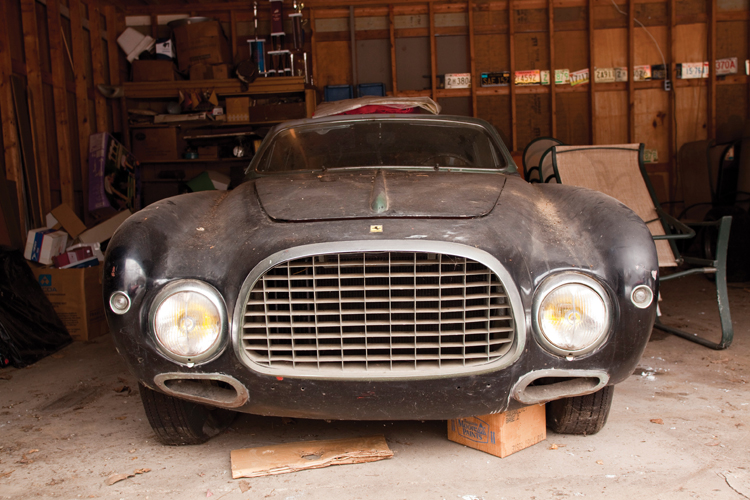There will be a rallying cry to keep it original, but unfortunately it just isn’t nice enough to display or use the way it is
Produced between 1951 and 1953, Ferrari’s 212 series carried the latest evolution of the formidable Colombo V12 engine. It was immediately successful in competition, winning both the Tour of Sicily and the Coppa Inter Europa, but the most important victory was surely the rugged 1951 Carrera Panamericana where the Ferraris delivered an amazing one-two finish!
As was common Ferrari practice, even-number chassis were applied to competition cars while odd numbers were road cars—or Inters. However, the degree of individual orders meant that Inters could have different performance features, and this particular car is currently fitted with the triple Weber carburetor setup, which boosts performance by 30 horsepower and pushes top speed to around 125 mph.
Almost all 212s have detail differences, as they were individually custom-bodied by various coachbuilders. The Vignale-bodied cars are particularly attractive. This was due in large part to the relationship between Alfredo Vignale and his star designer Giovanni Michelotti. Together they gave Ferrari an aggressive and distinctive look.
Over the years, Vignale carried a number of distinctive design features—everything from rear fins, triangular cutaways on the rear wings, slotted taillights, fender portholes, unique interiors and distinctive front end treatments. No two Vignale Ferraris were styled exactly alike.
In 1977, 0267EU was acquired by Larry Nicklin, from whom it is offered today. Nicklin’s penchant for strong design clearly influenced his attraction to this car. In 1979, he repainted it in its original black with a green top. It has remained in Larry Nicklin’s possession for over 30 years.
It is often repeated—and entirely accurate—that a classic car is only original once. More and more, Ferrari enthusiasts are attracted to highly original cars because of the restoration or preservation opportunities they present. As such, 0267EU could either be left entirely as-is, sympathetically restored and mechanically sorted or taken down to its chassis and completely restored, in which case the fact that the new owner has an extremely original car to start the project.
Add to that the fact that 0267EU is a matching-numbers car of a very desirable early Ferrari model, bodied by Vignale, no less. It is guaranteed to garner tremendous attention from Ferrari enthusiasts the world over.

